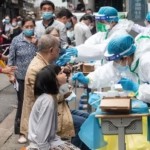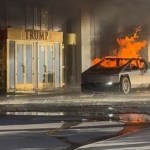Discover the latest trends in the Maharashtra Assembly Election Results 2024. Early data suggests Mahayuti’s lead in Western Maharashtra with key races in Kolhapur, Satara, and Pune districts.
Maharashtra Assembly Election Results 2024: Early Trends & Key Insights from Western Maharashtra
As the results of the Maharashtra Assembly Election 2024 come in, early trends suggest that the ruling Mahayuti alliance is maintaining a solid lead in Western Maharashtra, capturing 41 of the 58 Assembly seats. The opposition Maha Vikas Aghadi (MVA) has secured 11 seats, with a few other constituencies still too close to call. These early figures paint a promising picture for the ruling alliance, though several high-profile candidates are still locked in tight contests.
In this article, we will explore the latest trends, discuss key constituencies, and highlight notable races in the Maharashtra Assembly Election Results 2024, particularly focusing on Western Maharashtra. The districts of Kolhapur, Satara, Solapur, Sangli, and Pune are emerging as hotbeds of political activity, where the battle between the Mahayuti and MVA is expected to shape the overall outcome of the election.
Early Trends in Maharashtra Assembly Election Results 2024
The Maharashtra Assembly Election 2024 has seen a decisive early performance by the Mahayuti, which comprises the BJP, Shiv Sena, and smaller regional allies. Together, the alliance has secured strong leads across several constituencies, but the Maha Vikas Aghadi is also putting up a strong fight, particularly in urban pockets and areas with a high presence of the Congress and NCP.
The ruling alliance’s performance is particularly significant in Western Maharashtra, an area traditionally seen as a stronghold for the Congress and NCP. However, the BJP and its allies have made significant inroads here, securing key constituencies like Kolhapur, Satara, Pune, and Sangli.
Key Races in Western Maharashtra
The Maharashtra Assembly Election Results 2024 in Western Maharashtra are proving to be critical, as these districts have traditionally been contested between the Congress-NCP alliance and the BJP-Shiv Sena. Early results suggest that the Mahayuti is gaining ground, but a few prominent candidates from the MVA are still holding their ground.
- Karad (Satara District): Former Chief Minister Prithviraj Chavan of the Congress is narrowly leading against BJP’s Atul Bhosale, with a lead of 1,000 votes. Chavan, however, alleged that the BJP was distributing money to influence voters in the region, a claim that has stirred political controversy.
- Satara District: The BJP’s Shivendraraje Bhosale has emerged as a dominant figure in Satara, building a substantial lead early in the counting process. His success is seen as a significant blow to the NCP, which had previously held sway in the region.
- Maval (Pune District): NCP’s Sunil Shelke has taken an unassailable lead of 38,000 votes against BJP’s Bapu Bhegade. Shelke’s commanding performance reflects the NCP’s stronghold in this constituency.
- Ambegaon (Pune District): Senior NCP leader Dilip Walse Patil is leading by a narrow margin of just 143 votes, signaling that this race may go down to the wire.
- Bhosari (Pune District): BJP’s Mahesh Landge has established a clear lead over NCP’s Ajit Gavhane, with a gap of 15,000 votes. This is a strong indication of BJP’s growing influence in urban areas like Bhosari.
- Chinchwad (Pune District): In the Chinchwad seat, BJP’s Shankar Jagtap is leading over the NCP’s Rahul Kalate in a race that is seen as a major urban battleground.
The Political Significance of Western Maharashtra in 2024
The performance of the Maharashtra Assembly Election 2024 in Western Maharashtra is critical for both the ruling Mahayuti and the opposition MVA. Historically, this region has been a Congress-NCP stronghold, but with the growing influence of the BJP under Prime Minister Narendra Modi’s leadership, the balance of power has begun to shift. The outcome of the Western Maharashtra races will likely be a key indicator of the future political landscape in the state.
As the Mahayuti continues to dominate in rural areas, the MVA has found significant support in urban constituencies, particularly in cities like Pune, Nashik, and Kolhapur. However, the Mahayuti is benefiting from its strong organizational machinery, large-scale outreach programs, and the popular image of Narendra Modi.
Voter Sentiment and Key Issues in Maharashtra
One of the standout features of the Maharashtra Assembly Election Results 2024 is the marked shift in voter sentiment. While the MVA coalition has maintained a loyal base in certain areas, issues like agricultural distress, unemployment, and rising fuel prices have weighed heavily on the minds of the electorate, creating opportunities for the BJP to make inroads.
In Western Maharashtra, the BJP has capitalized on its pro-farmer image and strong support among rural communities. The party has also relied on its alliance with the Shiv Sena, which has helped secure crucial seats in the region. For the MVA, focusing on the urban middle class and issues of social welfare has been key to maintaining a presence in places like Pune and Kolhapur.
What’s Next for the Maharashtra Assembly Election 2024?
As the counting continues, it is clear that Western Maharashtra will play a pivotal role in determining the final makeup of the Maharashtra Assembly. With the Mahayuti leading in many constituencies and the MVA fighting hard in key seats, the race is far from over. Political analysts suggest that the final outcome could be shaped by voter turnout and the results of close battles like those in Ambegaon and Karad.
It’s important to note that while early trends suggest a Mahayuti victory in many constituencies, the MVA has managed to retain a strong presence in several key urban areas, which could help them in the final tally.
The Maharashtra Assembly Election Results 2024 will not only determine the political landscape of the state for the next few years but also serve as a reflection of the changing dynamics in Indian politics, particularly in the context of rural-urban divides, regional power struggles, and the ongoing challenges of governance.






